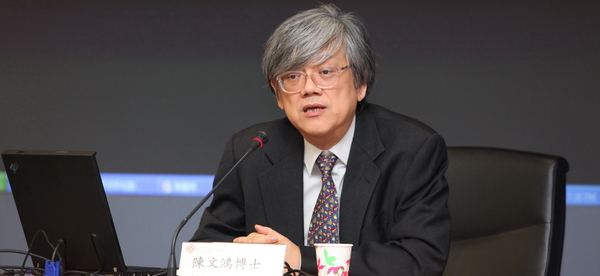|
|
|
|
|
|
|
PRD regional integration |
|
|
PRD regional integration
|
The Guangdong government has recently published five policy documents covering such aspects of regional integration as infrastructure, industry distribution, basic public services, city-rural planning and environmental protection, for the nine cities in the Pearl River Delta Region. These documents set out the government's plans from now till 2020 with interim targets set for 2012. In this issue, Dr Thomas Chan Man-hung, Director of PolyU’s Public Policy Research Institute and Head of the China Business Centre, shares with us his views on PRD regional integration. What do you think about the policy documents? It is a logical development of the basic vision and strategy laid down in the Outline of planning of the Pearl River Delta Region Reform and Development (2008-2020), announced early last year. In the five documents, more detailed planning, investment projects, and development objectives have been laid out. These will be used not only for sketching the framework of government policy in the coming decade, but also as action guidelines for firms and organizations working in the different areas of the PRD region. In your opinion, what is the overriding idea in the documents? The overriding idea seems to create a metropolitan region centering on Guangzhou. Heavy emphasis is placed on railway network accessibility within one hour for all localities in the region and a universalization or standardization of public services for all residents in the region. These include long-term residents without formal local household registration. The basic framework will be completed in 2012 and by 2020, the metropolitan region will be fully integrated. The Guangdong government has added an additional vision/target that was not mentioned last year: that is, that Guangzhou and Shenzhen will become world cities by 2020. What are the implications for the PRD region? The policy documents have far reaching implications for the PRD region and for Hong Kong. The region will become the largest (over 40 million population) and most integrated and economically dynamic metropolitan region in China and the world, surpassing the aging Greater Tokyo with its 33 million population. All types of development economies - synergy, networks, scale and scope and agglomeration - will be realized. Even though it might not achieve the greatest efficiency, all of these economies will result in a positive impact with increasing returns. The effect will be of a magnitude that no other cities or metropolitan regions are capable of producing. On the basis of the rapid development and growth of the PRD region through massive investment and the realization of these economies, the region will also be transformed into a huge service economy. This is probably the reason why the Guangdong government is so confident that Guangzhou and Shenzhen will become world cities within 10 years. What are the implications for Hong Kong? The city's economy has been reliant on net exports of services to the PRD region and to other parts of the Chinese mainland for its recent modest economic growth. If the Pearl River Delta region becomes more service-dominated, it will certainly import substitute services from Hong Kong and might also export them to Hong Kong. Given that Guangzhou and Shenzhen are striving to become world cities within such a short period of time, they are bound to compete fiercely with the neighboring world city of Hong Kong. Inter-city competition will definitely intensify. After so many years of doing nothing and investing nothing since the rise of the bubble economy before the handover, Hong Kong has been indulging in only speculative activities. Today is the time for Hong Kong to wake up and change its course, if, that is, it wishes to defend its position as the leading world city of China in the future.
|
